
Delving into the world of horror movies reveals a fascinating array of hidden details, symbolism, and cleverly placed Easter eggs that often go unnoticed by even the most dedicated fans. These intricate elements, woven into the very fabric of the genre, showcase the true artistry of filmmakers who masterfully create captivating stories that go beyond the surface-level scares. This article will reveal 40+ hidden details you may have missed in some of your favorite horror movies.
From blink-and-you’ll-miss-it cameos to subtle foreshadowing, these gems provide a deeper understanding of the films. They will entice you to look closer and unravel the mysteries within. So, grab your flashlight, and let’s embark on a thrilling journey through horror cinema’s dark corners and secret passageways as we uncover carefully concealed treasures.
The complete narrative of The Thing is divulged instantaneously
Recall the initial spectacle of the 1982 horror masterpiece The Thing? The American crew rescues the Alaskan Husky that had sought refuge within their research encampment in Alaska. The Norwegian explorer attempting to terminate the canine vociferates at them.
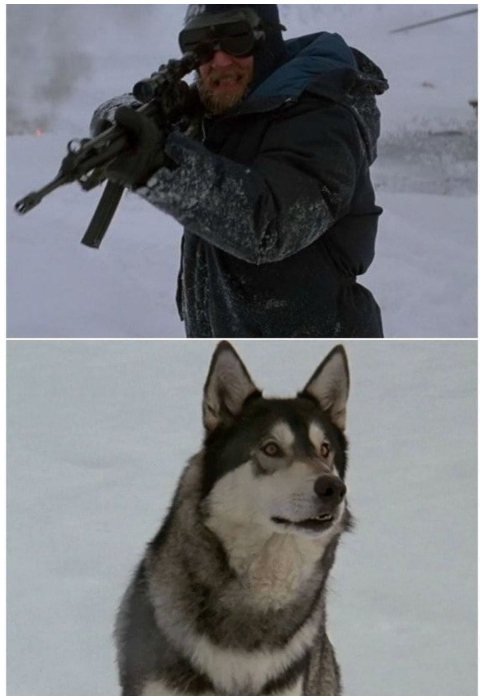
Regrettably, neither the Americans nor the spectators can comprehend him – yet his utterance contains a colossal plot giveaway. The Norwegian exclaims, “Stay back! It’s not a dog; it’s an entity! It’s mimicking a dog! It’s counterfeit! Retreat, you fools!”
Librarian’s sinister Encroachment
The horrifying jester Pennywise and his crimson balloon pervade It, even when unperceived. During 2017 It adaptation, Ben peruses a book in the library. A librarian is discernible in the backdrop.

Observe cautiously, and you’ll detect her inching nearer to Ben with each frame while gazing and grinning menacingly. It is Pennywise, having assumed the librarian’s guise…Terrifyingly unpretentious.
The eerie youngster near the coatrack
In this seemingly ordinary scene from Insidious, the lens trails Renai, the mother, as she tackles domestic chores. As we accompany her outdoors, she freezes upon glimpsing an odd boy performing a dance in her living room through the window.
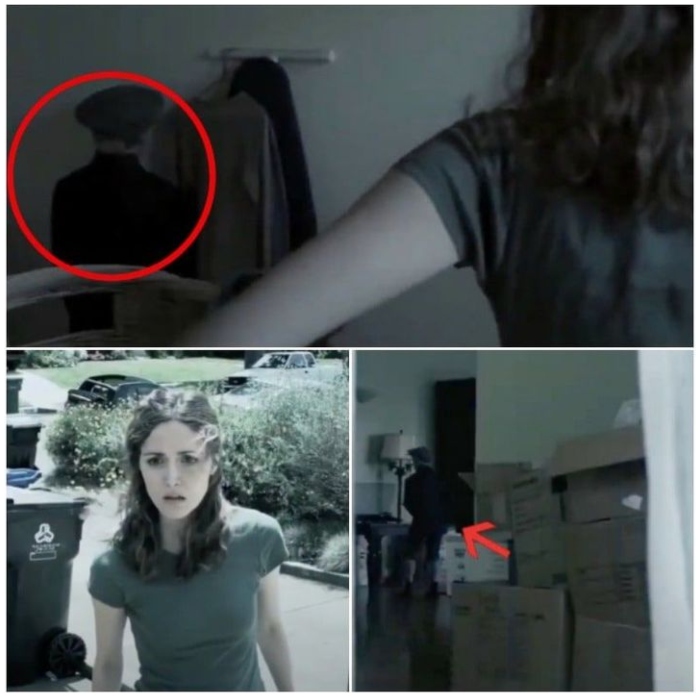
The audience and Renai overlooked the child’s presence, camouflaged among the garments on a coatrack moments before. This fleeting, spine-chilling instant is easily missed.
The undisturbed potato chip bags in A Quiet Place
In this dystopian film, sightless extraterrestrials with remarkable auditory acuity have conquered Earth. Hence, humans must dwell in absolute silence for survival.
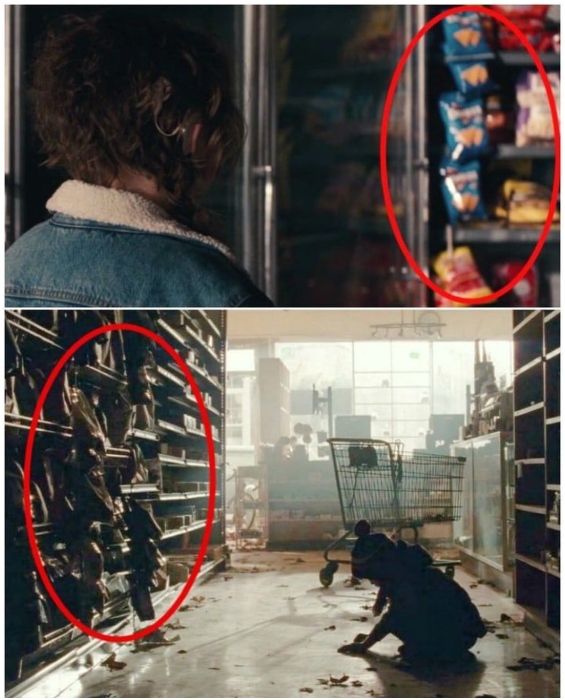
Every supermarket has been plundered well before our introduction to this petrifying existence, yet potato chip bags remain untouched on shelves and within vending machines. A special nod to detail! Of course, none dare approach the noisy bags.
An unmistakable sign of his unhinged state…
Did you ever recognize this ingenious blend of cameo and clue in Scream? Linda Blair, the child actor behind the possessed girl in The Exorcist, makes a brief, uncredited appearance as a journalist at Sidney’s school following the initial onslaught.
<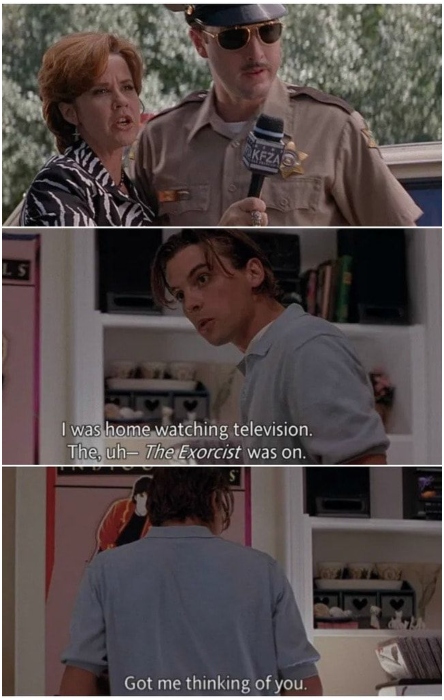
In the preceding scene, Billy delivers these unsettling lines to Sidney, alluding to The Exorcist (and offering our inaugural indication that he is no ordinary beau).
Billy the Puppet’s presence in Insidious James
Wan, the Australian director, and writer, helmed both Saw and Insidious. He is renowned for devising Billy the puppet, which conveys messages to the test subjects in the Saw series.
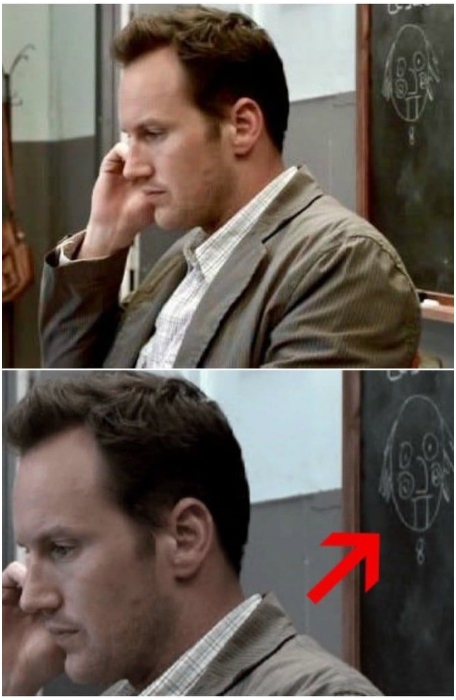
Naturally, James incorporates subtle acknowledgments of Billy in his other films. In Insidious, the creepy puppet’s sketch is distinctly visible on the chalkboard behind Josh in one scene.
A prophetic illustration
In Midsommar’s early stages, Dani and Christian quarrel in Dani’s apartment. During this altercation, a sizable painting by the renowned Swedish artist John Bauer adorns the wall above Dani’s bed.
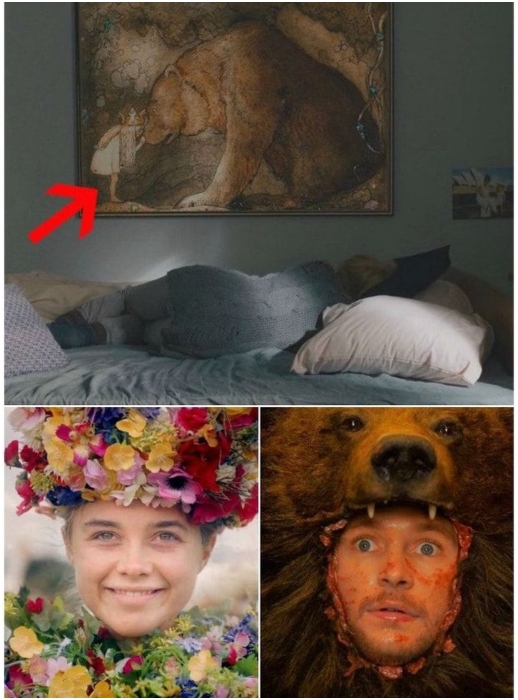
Bauer’s creations are deeply rooted in Nordic mythology. This painting of a princess-like girl kissing a bear is Poor Little Bear. For those familiar with the film, this artwork foreshadows Dani’s and Christian’s ultimate destinies.
The disquieting visage amid the trees
Midsommar brims with symbolism and clever nuances, some more conspicuous than others. This one is effortlessly missed, as it emerges while our focus is on Dani atop the pedestal and the cult members trailing her. To the left, an unsettling face melds with the forest.

It is the countenance of Dani’s sister, who ended her own life (and consequently, their parents’). This is not the only instance of Dani’s deceased family members appearing throughout the film, symbolizing her profound trauma from the loss.
The early indication of Jigsaw’s true identity
Saw was a petrifying tour de force. The Jigsaw killer’s identity revelation at the conclusion was unparalleled. However, upon closer inspection, several hints were scattered along the way. This particular clue stands out.
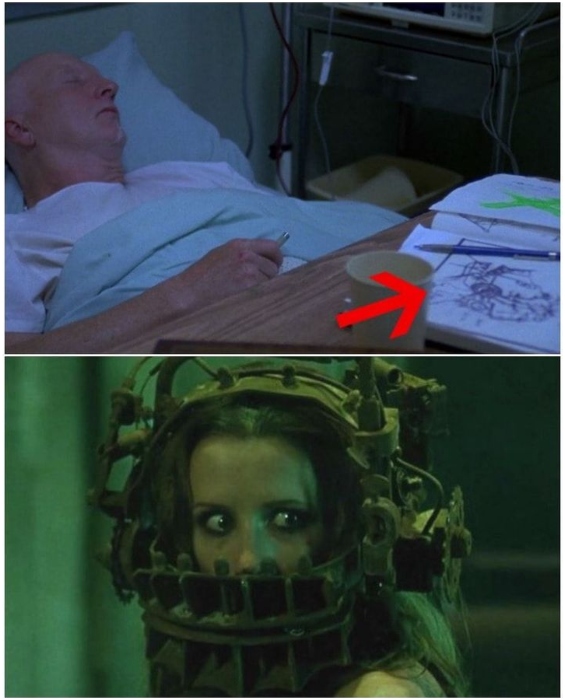
In the movie’s initial stages, an ailing man is admitted to the hospital where Dr. Gordon practices. As Gordon examines his patient, a sketchbook on the bedside table displays a drawing of the reverse bear trap, which is later employed on one of the victims…
The unobserved director cameo and Nightmare On Elm Street homage
Wes Craven, arguably one of the most accomplished horror writers and directors of recent decades, terrified audiences with A Nightmare On Elm Street in the ’80s. In the ’90s, he returned with another spine-chilling franchise, Scream.

Craven’s role typically remains behind the lens, so few recognize him as the janitor in Scream. Moreover, the janitor dons Freddy Krueger’s iconic sweater, a clever homage to Craven’s prior horror triumph.
Evan’s foreboding portent
The Final Destination series has subtle clues foretelling characters’ impending doom. Attentive observers can discern these hints, sometimes covertly hidden within the backdrop. One such instance occurs with Evan.
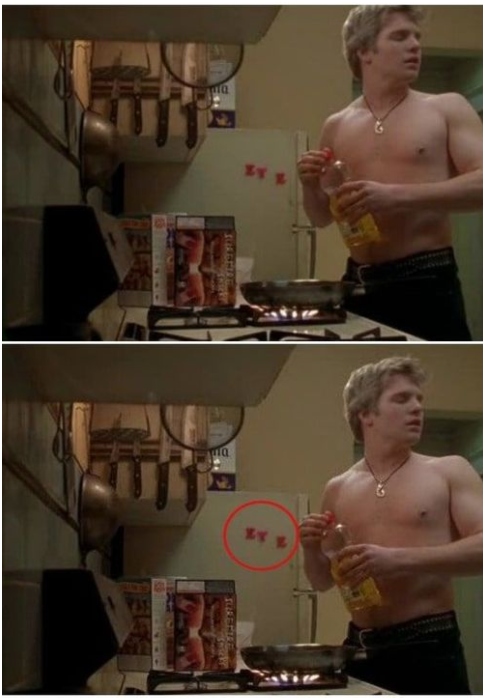
While Evan stands near the stove, the scene appears innocuous. However, the refrigerator magnets cunningly spell out “eye.” This discreet omen alludes to the gruesome demise Evan will soon experience…
The chilling repository of terror relics
In the 1998 film Bride of Chucky, Tiffany embarks on a quest to recover the malevolent doll’s remains from an evidence locker. This vault pays tribute to other revered horror films.

The locker contains artifacts from Friday the 13th (Jason Voorhees’s hockey mask), A Nightmare on Elm Street (Freddy Krueger’s glove), and Halloween (Michael Myers’ mask). Additionally, the puppets from Puppet Master and the chainsaw from The Texas Chainsaw Massacre are discernable.
The dual implications of ‘heed what lies behind’
In Scream, as Randy watches the iconic Halloween film, Ghostface stealthily approaches him. The audience, witnessing this, implores Randy to “turn around!” while he shouts the same warning at his television screen.
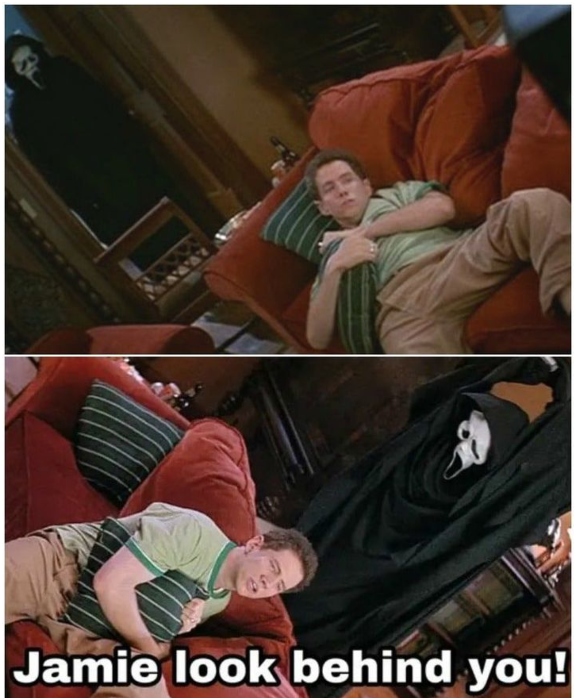
Randy is, in fact, addressing Jamie Lee Curtis in Halloween. However, the actor portraying Randy is named Jamie Kennedy, adding a clever, multilayered dimension to the scene—he is essentially admonishing himself.
The Shining’s alleged clandestine messages
Numerous hidden messages have been purportedly discovered within Stanley Kubrick’s cult classic, The Shining. While some theories appear far-fetched, all are intriguing nonetheless.

One such theory posits that Danny’s Apollo mission sweater is not arbitrary but rather Kubrick’s tacit admission of his involvement in fabricating the moon landing. Furthermore, room 237 is alleged to be a clue regarding the location of this staged event—on stage 237. The documentary Room 237 delves into these and other conjectures concerning the film’s enigmatic messages.
The equine ocular reference
In one of the many disconcerting moments in The Ring, Naomi Watts’s character, Rachel, finds herself on a ferry attempting to soothe a visibly agitated horse. However, her presence only exacerbates the animal’s panic, causing it to escape its enclosure, run wildly about the vessel, and ultimately leap overboard.

The close-up of the distressed horse’s eye echoes an image from the eerie VHS tape that unwittingly seals Rachel’s fate.
The omnipresent demon Valak
Throughout The Conjuring 2, the demon Valak’s name appears in various forms long before its identity is revealed. Here are three such instances.
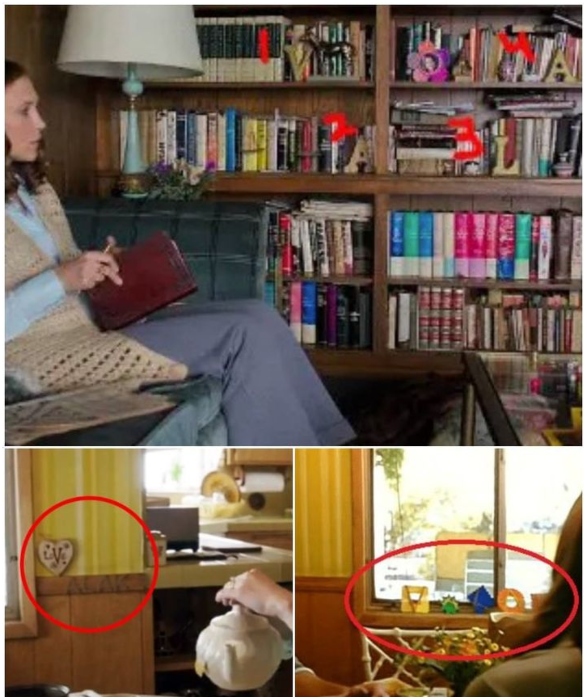
The four conspicuous letters forming Valak’s name are arranged on a bookshelf in one scene. In two other instances, his name materializes discreetly in the background of the family’s kitchen. Numerous other examples include a scene where Lorraine’s daughter crafts a bracelet spelling out Valak.
A Nightmare On Elm Street and Evil Dead 2 reciprocate
In the 1984 film A Nightmare on Elm Street, Nancy watches a trailer for the 1981 film Evil Dead as she struggles to stay awake. To return the favor, director Sam Raimi includes a subtle nod in his 1987 film Evil Dead 2.
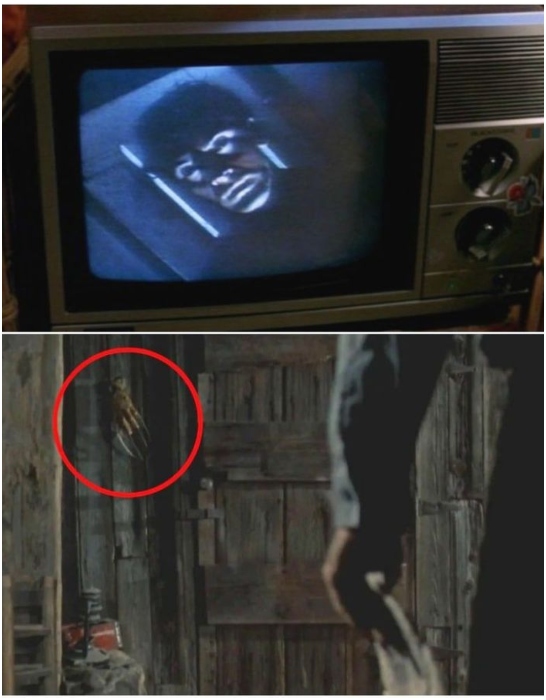
Fleeting and easily missed, Freddy Krueger’s razor glove is visible in the background of the toolshed where Ash wields a chainsaw. This delightful homage exemplifies the camaraderie between horror directors.
The ominous goat ballad
The Witch, a slow-burning thriller, establishes a sinister connection between fear and a goat for the first time in horror film history. One scene foreshadows the movie’s conclusion and the revelation of the malevolent entity.

Young twins Jonas and Mercy sing a song about the goat Black Philip as it frolics around them. Attentive listeners will notice that the lyrics insinuate that Black Philip is not an ordinary goat but the Devil himself.
The recurring presence of Sam Raimi’s Evil Dead automobile
In certain horror films, subtle details are woven not to incite fear or unveil crucial plot elements but to establish a recurring motif or pay tribute to iconic props. One such prop is a car.
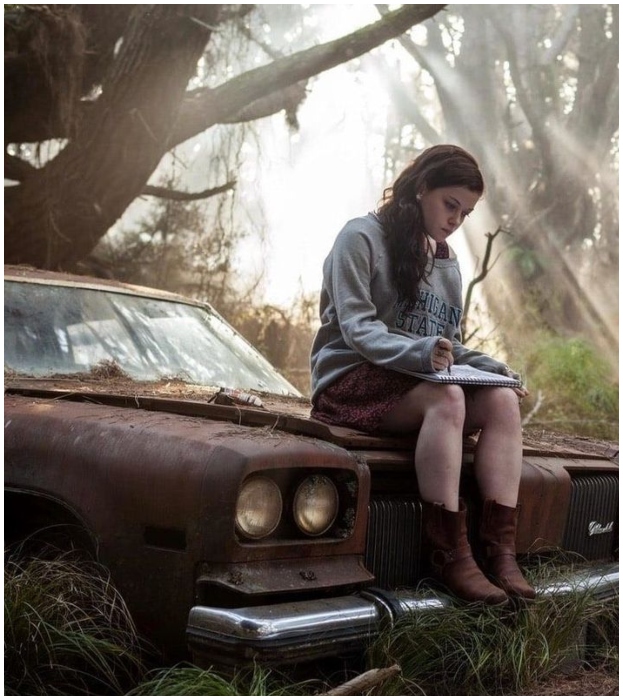
Sam Raimi’s 1973 Oldsmobile Delta debuted in Evil Dead and has since graced several subsequent films, such as Drag Me To Hell and the 2013 Evil Dead remake (from which this image is taken), which Raimi produced.
The meta-moment in Halloween
H20 Scream is renowned for its meta-nature, replete with allusions to the horror genre, classic tropes, and characters enthralled by horror. In one scene, the protagonists watch Halloween and laud Jamie Lee Curtis’s performance.
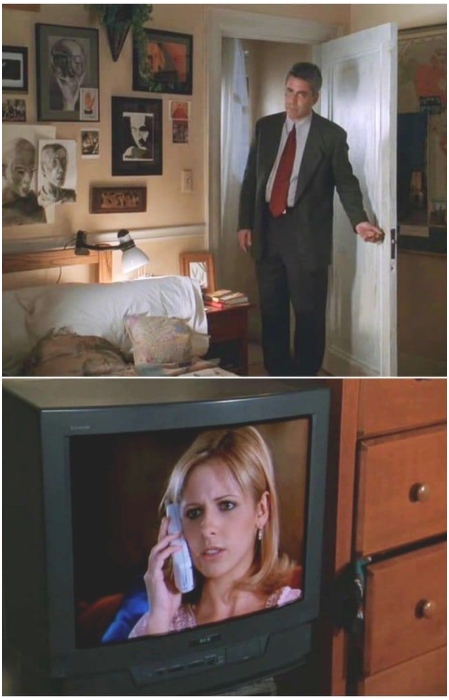
In a nod to this moment, Halloween H20: 20 Years Later, released a year after Scream 2, features two girls watching Scream 2 as they prepare for a party.
Extraterrestrial Cranium in Predator 2’s Trophy Chamber
In the thrilling denouement of Predator 2, Lieutenant Mike Harrigan, portrayed by Danny Glover, pursues the Predator into a concealed elevator shaft. He uncovers the creature’s hidden spacecraft nestled in a secret alcove.
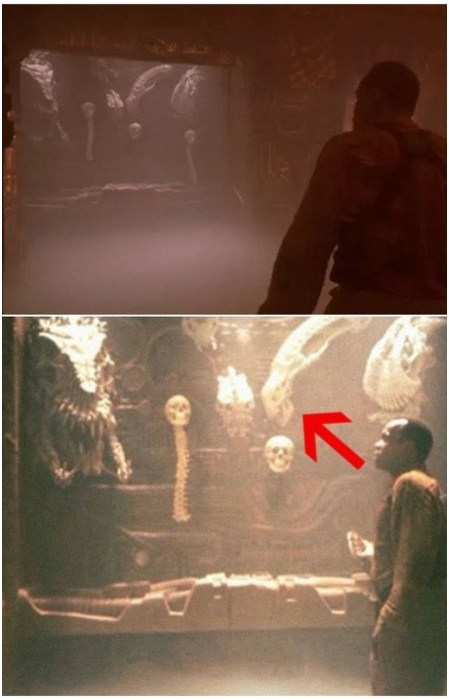
Surveying the interior, he stumbles upon a chamber with craniums from corporeal and supernatural beings. Among them rests a Xenomorph skull, the malevolent entity from the Alien series—a nifty tribute.
Covert Apparitions Abound in Hill House
For every spine-chilling occurrence that startled us in The Haunting of Hill House, multitudes more escaped our notice. The specters are omnipresent.

Consider these two instances: A sinister phantom girl hovers in the dining room, obscured behind Mother Olivia. Meanwhile, as father Hugh and son Steven dash down the staircase in trepidation, they overlook the two revenants trailing them.
Cujo Allusion in Pet Sematary
In the 2019 Pet Sematary revamp, neighbor Jud utters a seemingly inconsequential remark during Ellie’s birthday festivity. He mentions “a massive Saint Bernard that contracted rabies”—an unmistakable reference to Stephen King’s novel, Cujo.

Cujo narrates the tale of a rabid Saint Bernard that spirals into madness. Like Pet Sematary, it inspired a bone-chilling film adaptation.
Grislier Cut of Event Horizon
Event Horizon, a science fiction horror film, is known for its spine-chilling gore and gruesome visuals. However, an even more horrifying movie cut exists that was deemed too terrifying for audiences. This extended version features a “blood-soaked celebration” scene that left test viewers sick. One particularly stomach-churning sequence in the removed footage involved a woman with screws drilled into her teeth, causing unbearable pain and making audiences wince.
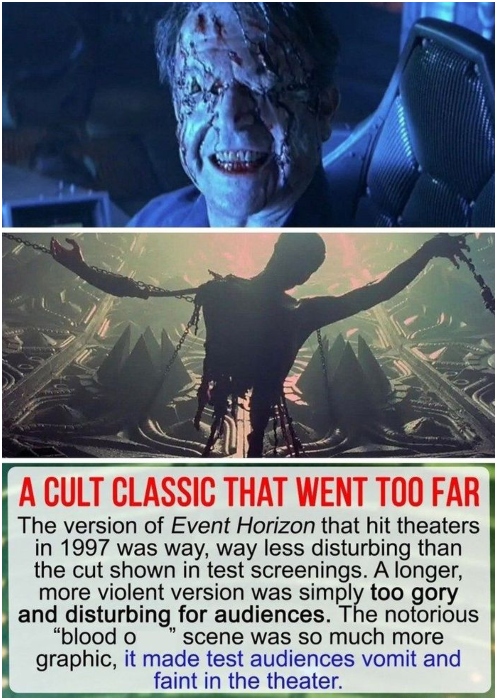
This ghastly scene was deemed too extreme for the final cut. It was ultimately removed to make the film more palatable for general audiences. The grislier cut of Event Horizon would be a testament to the creators’ willingness to push boundaries in the horror genre, even if it meant sacrificing certain scenes for viewer comfort.
Faun’s Regression in Pan’s Labyrinth
Pan’s Labyrinth ranks highly among beloved dark fantasy horror films. Observant cinephiles have discerned Pan the Faun’s rejuvenation as the story unfolds.

This transformation corresponds to the swelling moon, culminating in a full moon by the film’s close. When Ofelia encounters the elderly Pan, the moon is but a crescent. He appears visibly rejuvenated in the full moon’s presence, even exhibiting greater agility.
It Wink in The Dark Tower
The 2017 action-fantasy film, The Dark Tower, is based on Stephen King’s sprawling nine-book saga. The cinematic adaptation garnered much-deserved attention, with the director embedding tributes to the illustrious author.
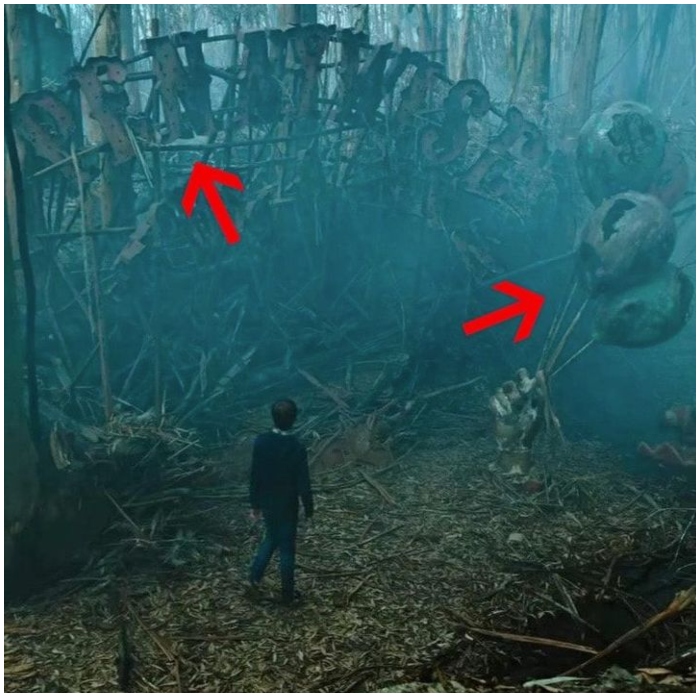
One such homage occurs when young Jake traverses an abandoned fairground. The sign bearing Pennywise’s moniker and the accompanying balloons unmistakably reference King’s magnum opus, It.
The Shining’s 42 Enigma
In Stanley Kubrick’s psychological horror film, The Shining, 42 appears in several instances, creating a sense of intrigue and mystery. This recurring symbol can be seen on Danny’s clothing, on the license plate of Dick Hallorann’s rental car, and in connection with a specific television scene. In that scene, the movie Summer of ’42 plays in the background, further emphasizing the number’s significance within the film.

While the true meaning behind the recurrence of 42 is still debated, some theories suggest it might be connected to the Holocaust, specifically the initiation of the Final Solution in 1942. This potential link adds another layer of complexity to The Shining, hinting at the possibility that Kubrick deliberately used 42 to allude to the dark history of humanity. While the meaning remains open to interpretation, the enigmatic presence of the number 42 in the film continues to spark curiosity and foster discussions among viewers and film enthusiasts alike.
Shaun of the Dead’s Culinary Establishment
The cleverness extends beyond the title in the 2004 comedic horror Shaun of the Dead. The film brims with sharp humor and horror nods. In one scene, protagonist Shaun seeks to dine at a seafood eatery.
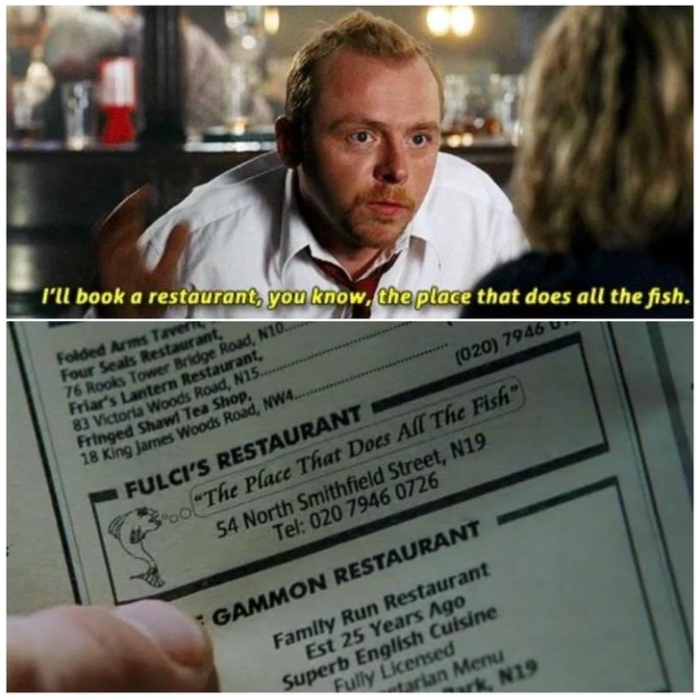
He finds the contact for Fulci’s, “the establishment specializing in aquatic cuisine.” The name Fulci pays homage to the esteemed Italian horror director Lucio Fulci, christened the Godfather of Gore.
Subtle Hints in The Sixth Sense
The 1999 thriller-drama The Sixth Sense is a cinematic triumph, with its unforeseen twist ending catching many off-guard. Yet, numerous clues are peppered throughout the film, often overlooked during the initial viewing.
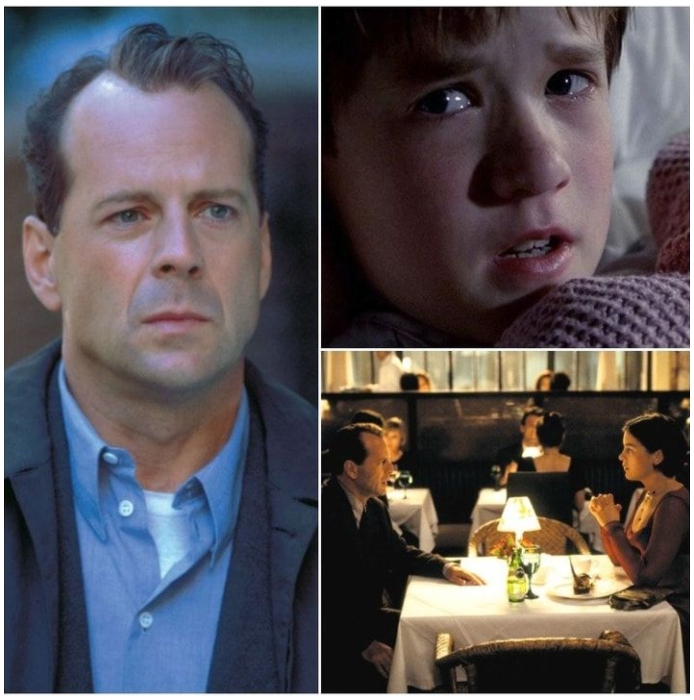
For instance, Malcolm dons the same attire throughout (the clothes he perished in). Another telling hint occurs when a frightened Cole murmurs, “I see dead people,” and the camera abruptly shifts to Malcolm. Finally, the seemingly frigid anniversary dinner scene at the restaurant unveils the truth: the wife isn’t ignoring her spouse; the husband is simply absent.
The Breath Unveils the Truth
In The Thing’s finale, MacReady and Childs are the sole survivors at their Alaskan research outpost. As they exchange wary glances and share a bottle of scotch, they grapple with suspicions that one could be the malevolent entity.
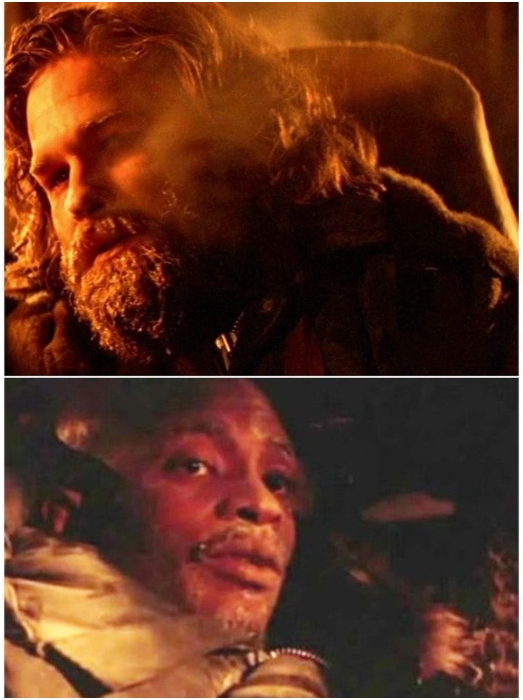
The film concludes without revealing the answer, but the truth is hidden in plain sight (and corroborated by the director). MacReady’s breath materializes as a frosty cloud in the cold air, while Child’s breath remains invisible, signifying his inhuman nature.
Enigmatic Artistry within The Mist
The Mist, a spellbinding work authored by psychological horror sovereign Stephen King, materialized into an illustrious 2007 film (and a less lauded 2017 TV series). This snippet originates from the 2007 rendition.

Thomas Jane can be observed laboring on a painting, which to ardent Stephen King enthusiasts, isn’t arbitrary. It portrays Roland Deschain, the protagonist of The Dark Tower novel sequence, who Idris Elba subsequently personified in the cinematic adaptation.
An Additional Billy the Puppet Appearance
Previously mentioned was director James Wan’s affinity for incorporating subtle references to his last magnum opus, Saw. Here, he strikes again.
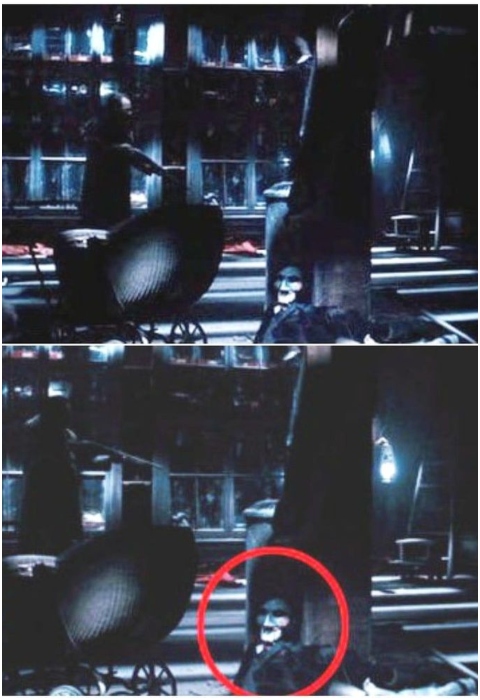
Wan helmed Dead Silence in 2007, a macabre tale where a ventriloquist’s apparition orchestrates heinous slayings. In essence, puppets pervade this narrative as well. Naturally, James ensured the beloved Saw mascot, Billy the Puppet, made an inconspicuous cameo. Billy can be discerned seated on the floor in the dimly lit scene.
The Whiteboard Laden with Horror Homages
Although ostensibly conspicuous, this element merits recognition. Joss Whedon’s 2011 film, The Cabin In The Woods, upends numerous horror tropes while offering both frightful and comedic tributes to the genre, infused with Whedon’s characteristic flair and humor.

In the laboratory where engineers devise the hapless teenagers’ fate, a whiteboard brims with allusions to iconic horror adversaries and supernatural beings.
Pennywise’s Chromatic Eye Transformation
If Pennywise, the sinister dancing clown in It, wasn’t sufficiently petrifying, he could alter his eye color. This unnerving attribute, derived from the original tome, surfaces in a scene in the 2017 adaptation. It occurs during the initial, poignant encounter between Pennywise and George.

A perturbed George seeks his paper vessel, only to discover Pennywise lurking in the storm drain. Sensing George’s apprehension, Pennywise shifts his eyes to a soothing blue hue (mirroring George’s mother’s eye color) to establish familiarity.
The Fugitive Clues in Hereditary
The lower images required brightening to discern the eerie specters within the original frames. Hereditary lingers as a skin-crawling thriller well beyond the conclusion, and these visuals offer insight into its lingering effects.

Gradually, the truth unravels, with clues shrouded in darkness throughout the film. Once detected, these revelations elicit spine-chilling jump scares.
The German Word ‘du’ is a Clue
German speakers likely deciphered the twist in Goodnight Mommy well ahead of their fellow viewers. When addressing her twin offspring, the mother employs the term “du,” meaning “you.”

However, unlike the English equivalent, “du” refers solely to an individual, not a collective. This linguistic nuance hints at her inability to perceive her second son, Lukas, who is actually deceased.
Cult Adherents Encircling the Residence at Nightfall
Examine the lower image and juxtapose it with the upper one. A striking day-to-night transition occurs in this arresting exterior shot from Hereditary. In both instances, the house appears briefly, but pausing and scrutinizing the nocturnal image reveals a circle of unclothed figures encompassing the dwelling.
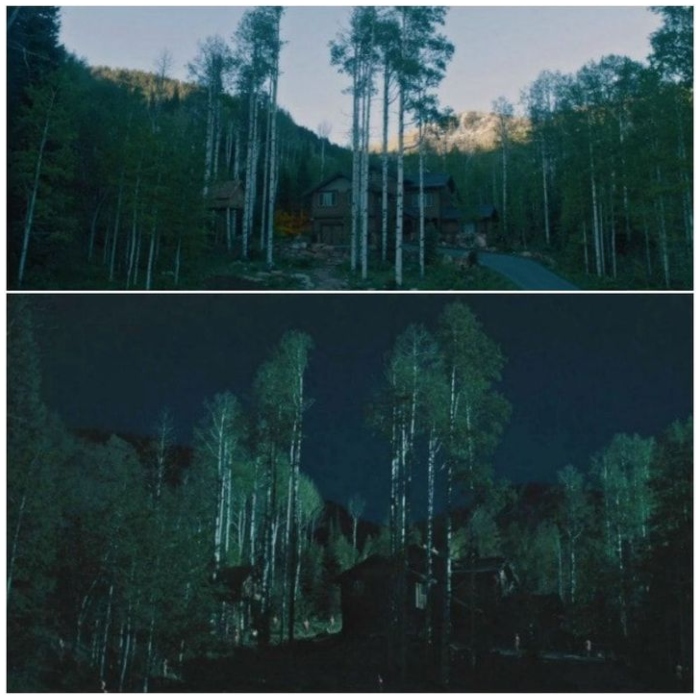
Their motionless, unnerving gazes persist until the film’s denouement when their identities finally surface.
An Unorthodox Pumpkin Carving
Donnie Darko, the 2001 indie cult sensation, strays from conventional horror but exudes an unsettling atmosphere with its fair share of disquieting sequences. One such scene, regrettably excised, alludes to Danny’s deteriorating psyche, invaded by the unnerving rabbit, Frank.

Danny and his sister Elizabeth (portrayed by real-life siblings Jake and Maggie Gyllenhaal) engage in jack-o’-lantern carving. However, Danny deviates from the norm, crafting a pumpkin in the likeness of Frank’s visage.
Alfred Hitchcock’s Covert Psycho Cameo
The legendary Alfred Hitchcock relished discreetly appearing in his films. One of his more obscure cameos is in Psycho. Within the opening minutes, an office window frames an exterior shot.
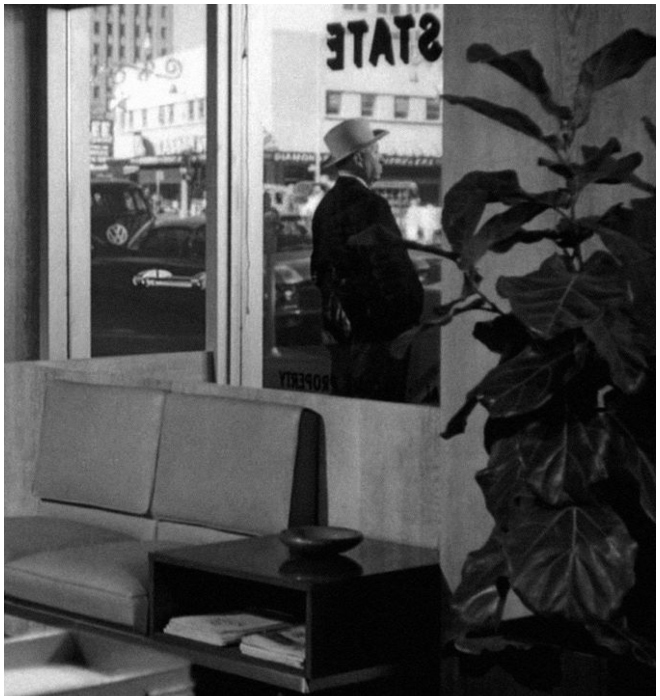
A man donning a cowboy hat can be spotted on the street beyond. Indeed, it is Mr. Hitchcock himself. Regrettably, the purpose or hidden significance of this cameo remains a mystery.
The Genesis of ‘Easter Egg’ Notion
Many attribute the inception of “Easter eggs,” or concealed messages and clues in films, to the 1975 musical horror cult classic, The Rocky Horror Picture Show. In this film, eggs materialize in scenes such as beneath Riff Raff’s throne.
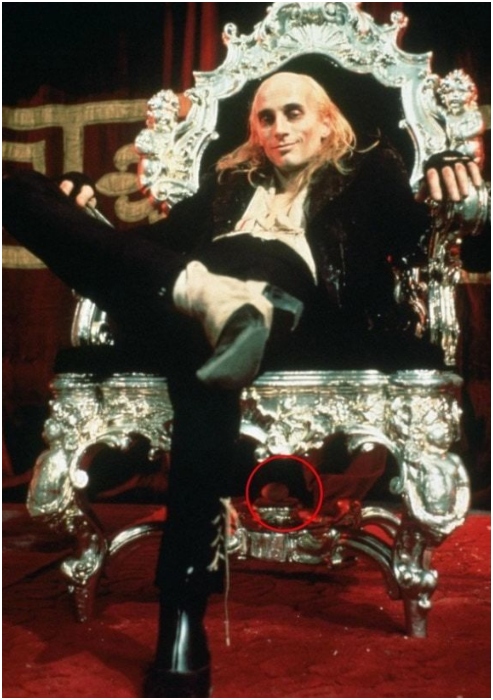
Crew members seemingly initiated the practice of inconspicuously placing eggs throughout the set, evolving into a longstanding inside joke. To this day, fans delight in discovering previously unnoticed eggs.
Dr. Loomis of Halloween pays tribute to Psycho
Donald Pleasance portrays Dr. Sam Loomis (depicted on the right) in the Halloween franchise, the therapist of the villain, Michael Myers. This character’s appellation, Dr. Sam Loomis, is an homage to the seminal horror film, Psycho.
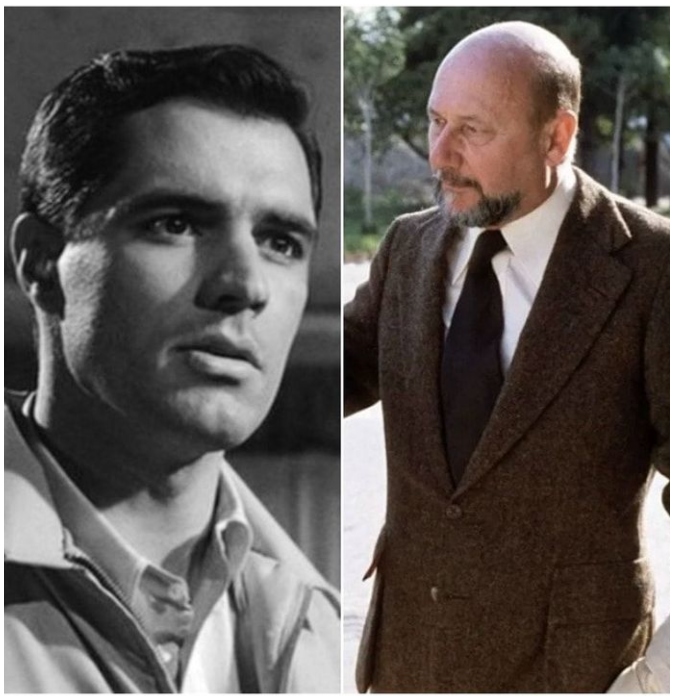
Psycho also features Sam Loomis, enacted by John Gavin (shown on the left). Despite their disparate elements, these two cinematic works are frequently juxtaposed, as both excel in cultivating tension.
The inaugural scene’s melody in The Shining
From the very outset of Stanley Kubrick’s adaptation of The Shining, an aura of foreboding is palpable. This could partially stem from a familiarity with the narrative, as it is derived from Stephen King’s spine-chilling tome.
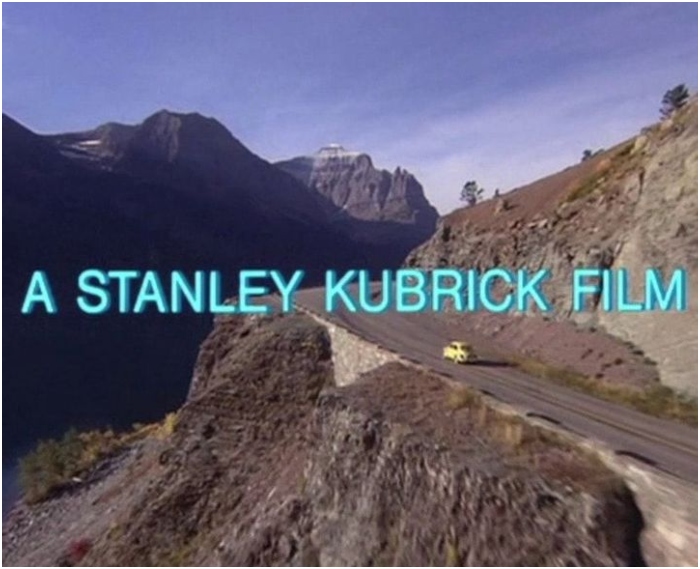
However, the auditory accompaniment plays a crucial role in establishing the ambiance. As the diminutive family traverses towards the hotel (unwittingly a colossal blunder), Dies Irae reverberates in the background. Dies Irae translates to “God of Wrath” in Latin.
An acknowledgment of Kurt Russell
Quentin Tarantino’s films often showcase dark and jarring themes. Yet, it would be a stretch to associate him primarily with the horror genre. His venture into the realm of terror materialized with Death Proof in 2007, replete with Easter eggs dispersed throughout the film’s duration.
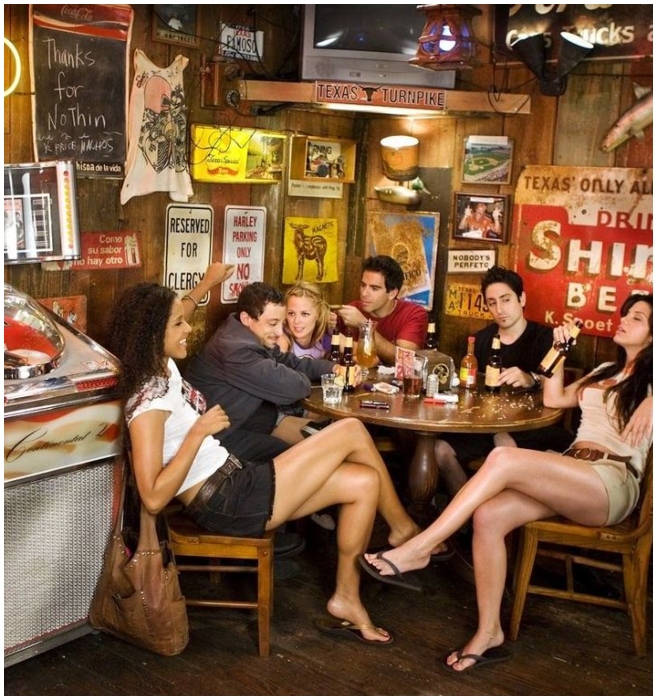
A favorite is Kurt Russell’s shirt in one scene, visible on the wall as a piece of memorabilia. The shirt is reminiscent of his attire in Big Trouble in Little China.
Concealed within the funeral parlor’s appellation
The Thing’s revered status is incontrovertible, and its influence permeates countless horror films released since its debut. As such, it is unsurprising that lesser-known horror flicks strive to pay tribute to The Thing.

Slither, a 2006 film centered around an extraterrestrial plague, features a scene that distinctly references The Thing. This funeral parlor in Slither is christened after MacReady!
Janet Leigh’s automobile reemerges
Few horror movies have aged as gracefully as Psycho. Hitchcock’s thriller was groundbreaking in its time and still evokes fear today.
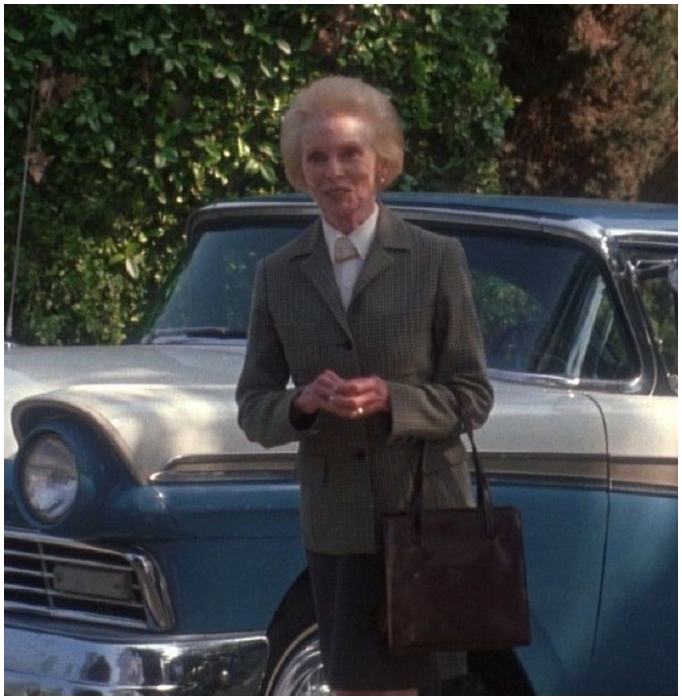
It’s timeless premise and flawless direction prompted Halloween: H20 to incorporate references to Psycho and other vintage films. This includes casting Janet Leigh, who famously starred in Psycho. Additionally, she drives the same vehicle in H20 as in Psycho!
A subtle nod in Silent Hill
The film Silent Hill derives its narrative from the eponymous retro video game, renowned for its atmospheric terror and influence on modern games. However, the game isn’t the sole source of inspiration for the movie!

Have you ever noticed that the educational institution in Silent Hill is called Midwich Middle School? This isn’t a random choice (nor is it due to its phonetic similarity to “witch”). Midwich is, in fact, the appellation of the school in the Village of the Damned.
Pegg and Wright’s cameo
It’s not uncommon for filmmakers to pay homage to their peers in the entertainment industry by including them in their movies. Land of the Dead, a 2005 horror film, showcases a grim setting, a touch of humor, and plenty of zombies. The film’s directors admired the cult classic Shaun of the Dead. They decided to express their appreciation by uniquely featuring the film’s creators, Simon Pegg and Edgar Wright.

Pegg and Wright appear as zombies in Land of the Dead in a memorable cameo! This entertaining crossover not only pays tribute to the talented duo behind Shaun of the Dead but also serves as a fun surprise for fans of both movies. By incorporating Pegg and Wright into their film, the Land of the Dead team demonstrates camaraderie and mutual respect within the filmmaking community.
The Dharma Initiative in Cloverfield
Cloverfield was released in 2008, capitalizing on the zeitgeist of found footage films. With the enduring popularity of The Blair Witch Project, Cloverfield successfully captured the public’s fascination with this style of cinema.

Did you know that J.J. Abrams, the creator of the television series Lost, directed Cloverfield? If you’re skeptical, consider this evidence: you can barely discern the Dharma Initiative logo in one scene in the corner.
The quintessence of 80s horror
To some, a predilection for 80s horror movies is a hallmark of a true horror aficionado. There’s an undeniable allure to the campiness of 80s horror films, akin to the sensation of entering a kitschy haunted house. Interestingly, one campy horror film pays tribute to another.
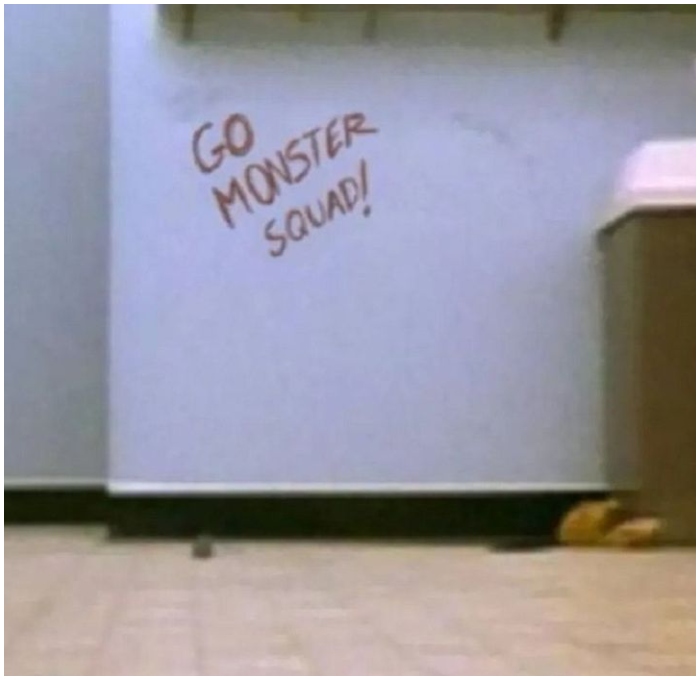
Night of the Creeps includes a subtle reference to Monster Squad. Curiously, Monster Squad was released after Night of the Creeps. How is this possible?
The debut of the Necronomicon
Chances are, if you’re a horror enthusiast, you’ve encountered the Necronomicon at some point. This fictional tome allegedly harbors malevolent powers. Originating in Lovecraftian tales (a classic source), the Necronomicon has since appeared in numerous horror films. Its most famous iteration is found in the Evil Dead series.

This sinister book’s iconic status is included in other films, such as Jason Goes to Hell. As you can see, the book resembles its counterpart in the Evil Dead series.
Imbibing the Freshest Fangoria Issue?
Perchance, you have yet to peruse Fangoria, the paramount publication within horror magazines. Since its inception, Fangoria has dedicated itself to exploring terror, providing fascinating glimpses into the creation of your beloved films.

As a token of gratitude for the magazine’s support, director Sam Raimi secreted an issue of Fangoria into one of his films. Discern its presence within this still from Army of Darkness!
Till Next Wednesday
We part a plethora of horror films revel in allusions to their fear-inducing predecessors. However, purveyors of the macabre often harbor affection for non-horrific cinema. Consider John Landis.
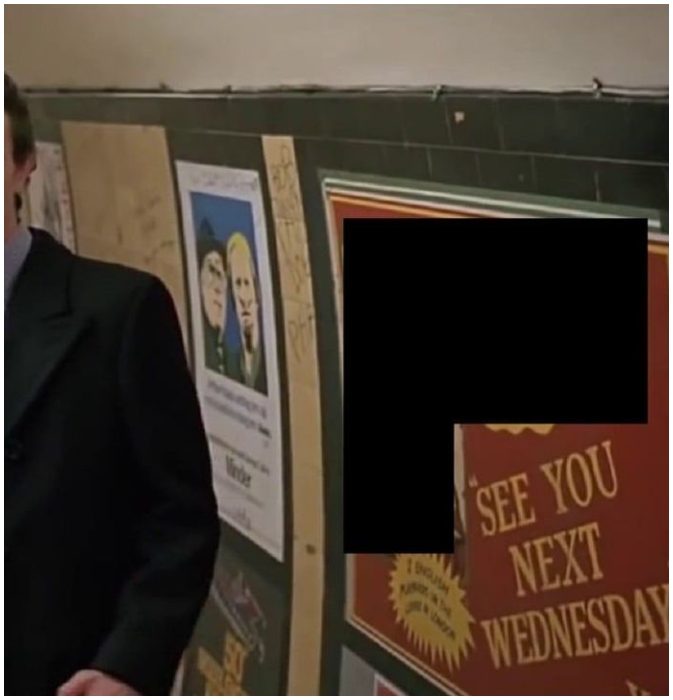
Despite his penchant for spine-tingling fares, such as An American Werewolf in London, Landis greatly admires 2001: A Space Odyssey. This ardor compelled him to embed “see you next Wednesday” within his werewolf opus. Observe the wall-mounted placard here.
A Lovecraftian Garment Tribute
Few authors command the reverence and influence H.P. Lovecraft enjoys within the horror sphere. While Stephen King and Edgar Allan Poe merit consideration, Lovecraft remains the genre’s apotheosis. His prolific work has spawned myriad film adaptations, including 2001’s Dagon, which melded two different Lovecraft tales.

The author’s devotees will perceive a character donning a Miskatonic University sweatshirt, a hallowed institution recurring in Lovecraft’s oeuvre.
Peter Jackson Honors His Humble Beginnings
Regrettably, Hollywood often witnesses individuals forsaking their roots upon attaining stardom. Yet, when a luminary acknowledges their origins, the gesture proves gratifying. Peter Jackson, now disassociated from low-budget horror, began his career within the genre.
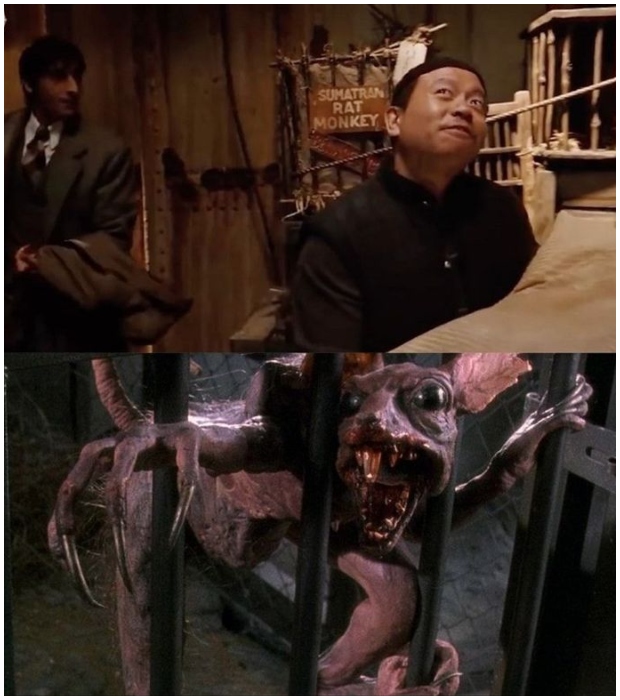
His formative film, Braindead (Dead Alive), centered on a narrative propelled by Sumatran Rat Monkeys. A subtle homage surfaces in the form of a crate featured in his rendition of King Kong.
The Exorcist’s Ephemeral Visage
While it might not qualify as an Easter egg, an unnerving element in The Exorcist deserves mention. Widely regarded as a groundbreaking horror masterpiece, The Exorcist is enveloped in stories of a cursed production, adding to its mystique and spine-chilling appeal. During a brief moment in the film, a disturbing face flashes across the screen almost too quickly for the viewer to fully comprehend.
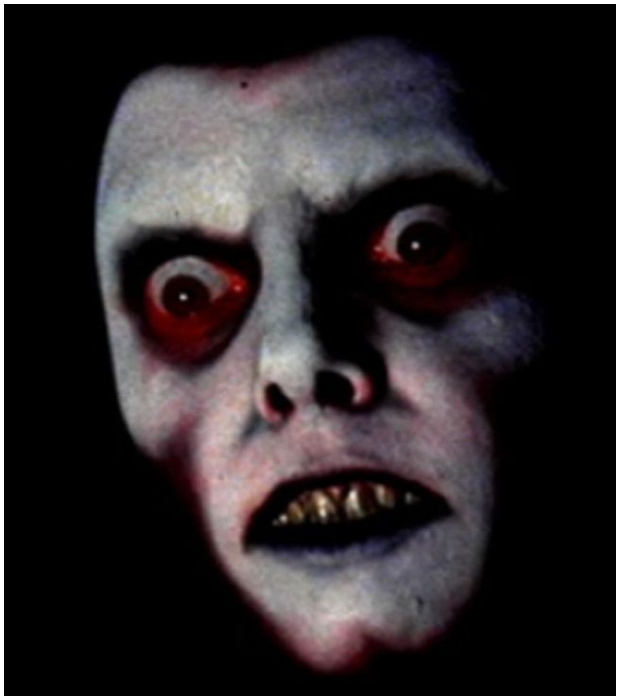
This fleeting appearance creates a subliminal dread that lingers long after the moment has passed. The inclusion of this brief yet haunting image showcases the director’s mastery of the horror genre, using subtle techniques to elicit fear and unease. This moment in The Exorcist has become legendary among horror enthusiasts, adding another layer of intrigue to the film’s storied history.
Get Out’s Musical Menace
Get Out epitomizes the rare gem within horror cinema, blending intelligence, humor, social commentary, and spine-tingling fear. Its singularity extends to its meticulous attention to detail.

The recurring musical motif, laden with Swahili lyrics, translates to “Brother, listen to the ancestors. Run!” Those privy to this knowledge undoubtedly experienced heightened dread in the theater.
Toy Story’s Ode to The Shining
Straying from the path, we present a non-horror film paying homage to a horror classic. One might assume Toy Story and Horror are mutually exclusive; however, the franchise has deliberately referenced The Shining on multiple occasions.

In Toy Story 4, a striking visual allusion appears to the carpet on which Woody and Buzz stand. Recognize the pattern? It mirrors the iconic flooring of the Overlook Hotel in The Shining!
The Shining’s Can Conundrum
We encounter numerous arcane theories surrounding the film as we delve into The Shining. One compelling notion posits the film as a commentary on the Native American genocide.
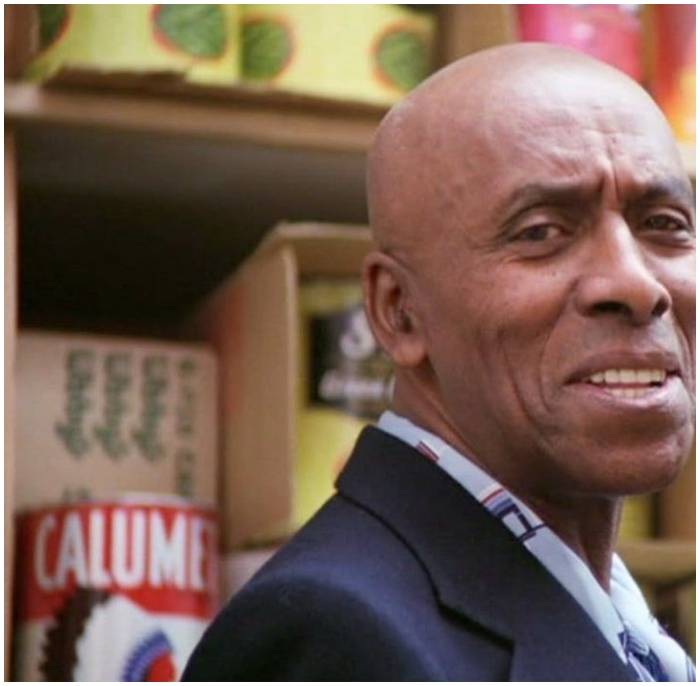
This interpretation surfaces when the hotel manager reveals the Overlook’s construction atop an Indian burial ground. Proponents of this theory also cite the appearance of Calumet cans during supernatural scenes as supporting evidence.
Poltergeist’s Authentic Ossuary
While many of the Easter eggs and hidden gems we’ve explored have been of a more lighthearted nature, this revelation about Poltergeist delves into the realm of the truly chilling. Already a profoundly unsettling film, Poltergeist gains an extra layer of horror upon discovering that the skeletons used in the movie’s climactic scene were not props but genuine human remains. It turns out that creating realistic artificial skeletons was deemed too expensive, leading the filmmakers to opt for this macabre alternative.
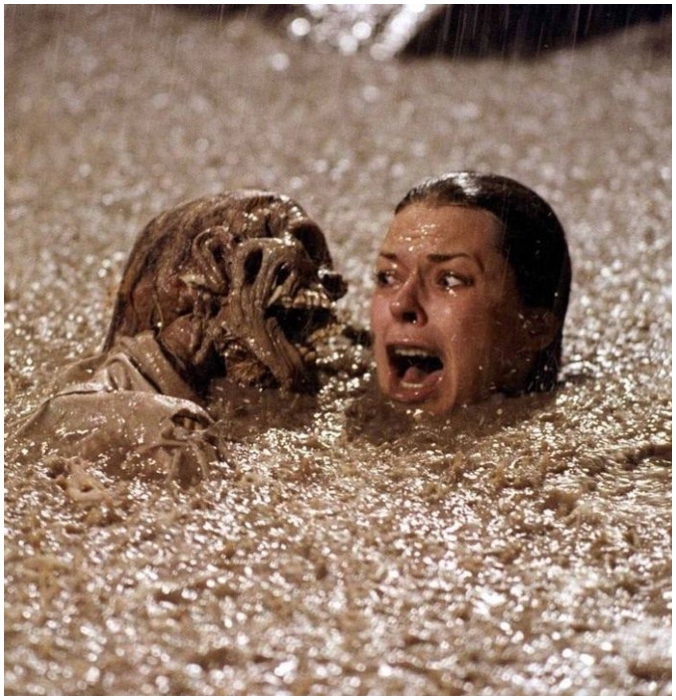
This gruesome fact adds a disturbingly authentic touch to the film, making the already frightening scenes even more horrifying for viewers. Knowing that the skeletal remains on the screen once belonged to real people increases the eerie atmosphere. It leaves a lasting impression on those who watch Poltergeist.